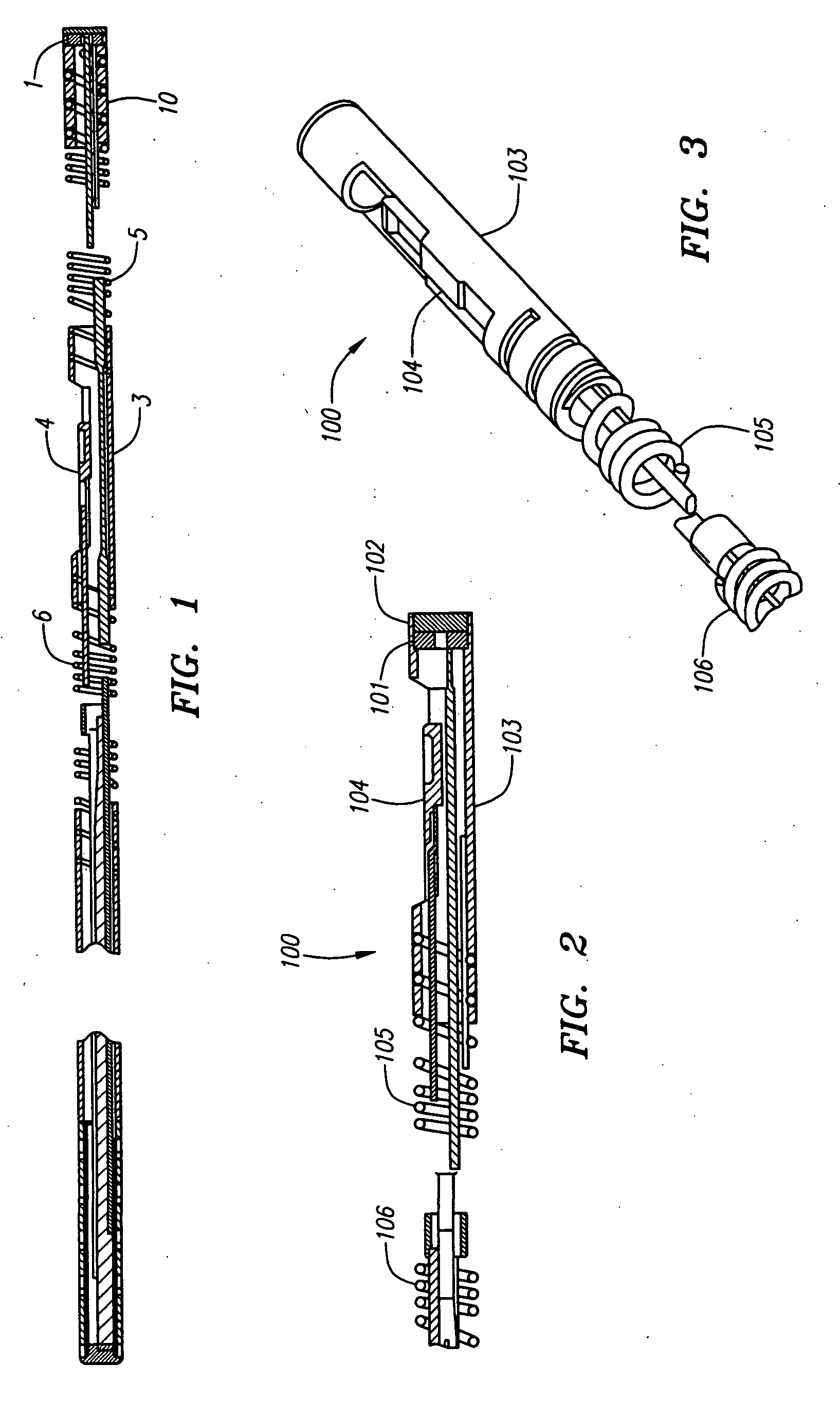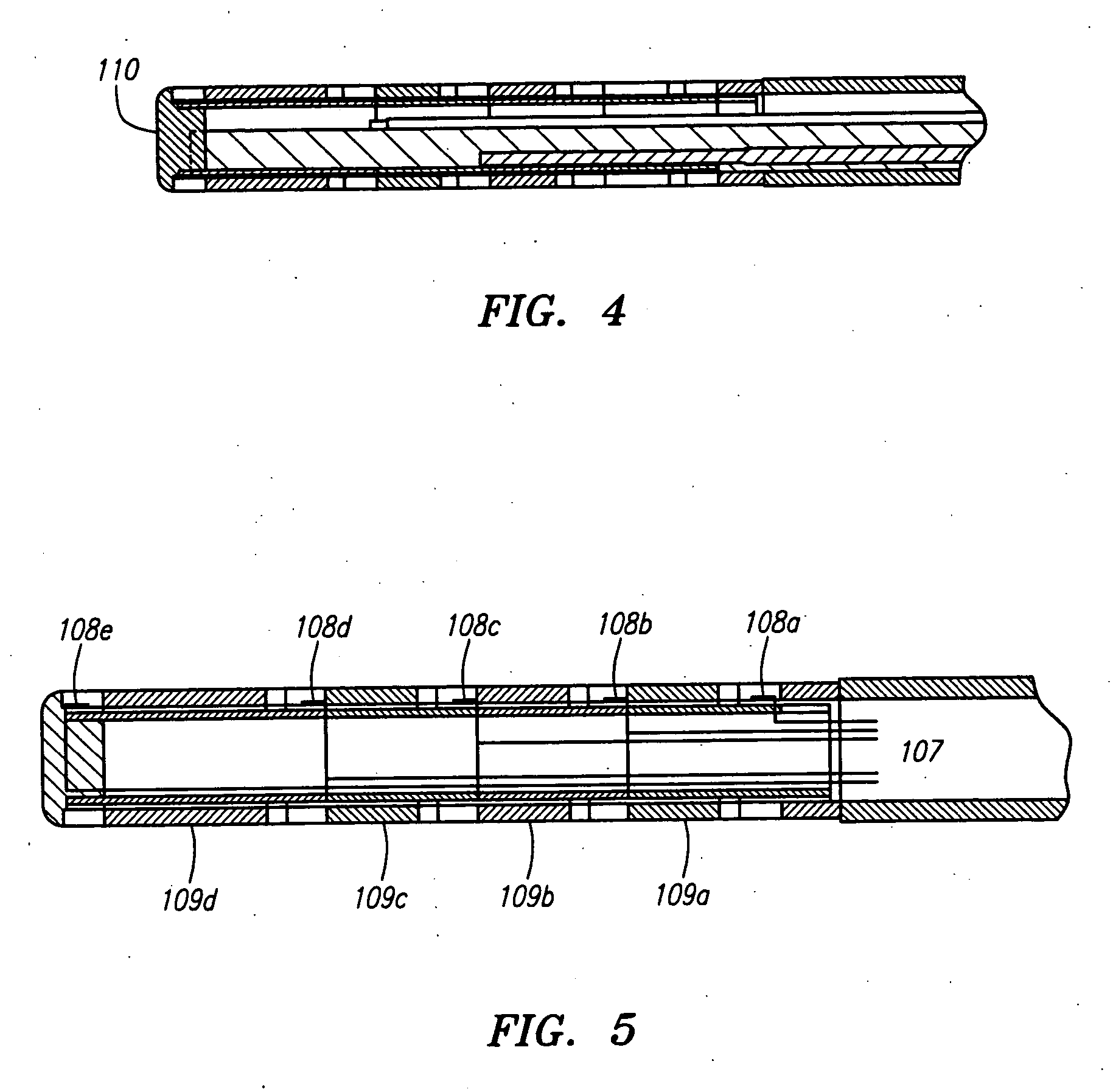Combination sensor guidewire and methods of use
a combined sensor and guidewire technology, applied in the field of ultra-miniaturized combined pressure sensors and flow sensors, can solve the problems of less accurate pressure measurements, inaccurate pressure measurements, and less efficacy of methods, and achieve the effects of minimizing the effect of side branch theft, increasing the placement accuracy of sensors, and improving accuracy and consistency in measurements
- Summary
- Abstract
- Description
- Claims
- Application Information
AI Technical Summary
Benefits of technology
Problems solved by technology
Method used
Image
Examples
Embodiment Construction
[0044] Turning to FIGS. 2-3, a combination sensor tip 100 of the present invention is illustrated. The combination sensor tip 100 includes a flow sensor 101, for example an ultrasound transducer, a Doppler flow sensor or any other suitable flow sensor, disposed at or in close proximity to the distal end 102 of the combination sensor tip 100. The ultrasound transducer 101 may be any suitable transducer, and may be mounted in the distal end using any conventional method, including the manner described in U.S. Pat. No. 5,125,137, which is fully incorporated herein by reference. Conductors (not shown) may be secured to the front and rear sides of the ultrasound transducer 101, and the conductors may extend interiorly to the proximal extremity of a guide wire.
[0045] The combination sensor tip 100 also includes a pressure sensor 104 also disposed at or in close proximity to the distal end 102 of the combination sensor tip 100. The pressure sensor 104 may be of the type described in U.S. ...
PUM
 Login to View More
Login to View More Abstract
Description
Claims
Application Information
 Login to View More
Login to View More - R&D
- Intellectual Property
- Life Sciences
- Materials
- Tech Scout
- Unparalleled Data Quality
- Higher Quality Content
- 60% Fewer Hallucinations
Browse by: Latest US Patents, China's latest patents, Technical Efficacy Thesaurus, Application Domain, Technology Topic, Popular Technical Reports.
© 2025 PatSnap. All rights reserved.Legal|Privacy policy|Modern Slavery Act Transparency Statement|Sitemap|About US| Contact US: help@patsnap.com



